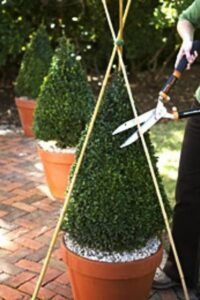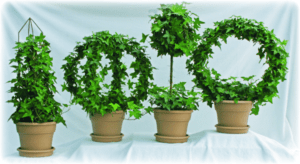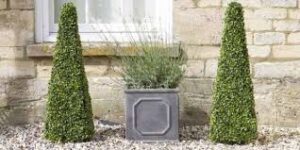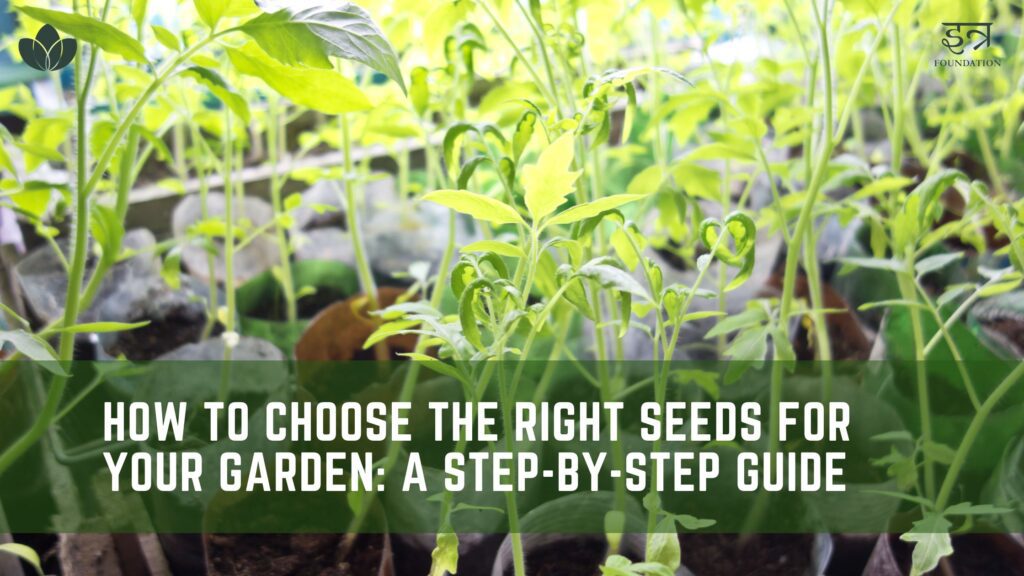
As someone who loves spending time outdoors, I’ve always felt that adding greenery to my outdoor space is essential to create a welcoming and relaxing environment. From large trees to small potted plants, adding a variety of greenery can transform any outdoor/indoor space into a natural oasis. Let me share my knowledge on how to take gardening to next level.
One way to take your garden design to the next level is by using hardy plants for topiaries and shapes. Hardy plants can withstand a range of weather conditions, making them ideal for shaping and pruning into unique forms. Hardy plants have range of benefits, including lower maintenance requirements and increased resilience against pests and diseases.
Incorporating topiaries and shapes into your garden design can have a dramatic effect, adding visual interest and a sense of sophistication. The use of creative shapes, such as spirals, cones, and spheres, can make your garden stand out and add a unique focal point. Whether you’re looking to create a sense of whimsy or a more structured and formal design, topiaries and shapes are an excellent way to elevate your outdoor space.
Choosing the right plants
While experimenting on hardy plants for topiaries and shapes in my garden, I’ve learned that selecting the right plants is crucial for achieving the desired effect. As there are many options for hardy plants, it’s important to consider a few factors when making your selection for topiaries and shapes
First, consider the climate in your area. Hardy plants are typically more resilient than other plant varieties, but they still require certain conditions to thrive. Research plants that are known to do well in your region and ensure that they are suitable for the specific location in your garden where you plan to use them.
Second, consider the shape and size of the plant. Not all plants are suited to be shaped into topiaries, so look for plants with small leaves and dense foliage that can be easily trimmed and shaped. Some examples of hardy plants that work well for topiaries and shapes include boxwood, yew, and holly.
Finally, maintaining the health of selected plants. It’s important to ensure the selected plants thrive and look their best. Regular pruning is essential for shaping and maintaining the desired shape of your plants. Additionally, it’s important to provide proper watering and fertilization to keep your plants healthy and strong.
By following tips mentioned above, you can create stunning and resilient topiaries and shapes that will elevate your outdoor space.
Creating shapes and topiaries
Creating shapes and topiaries in your garden can be a fun way to add some personality to your outdoor space. Here’s what you need to know:
Tools and Materials:
 Sharp pruning shears (scissors for plants)
Sharp pruning shears (scissors for plants)
- Gardening gloves
- Sturdy ladder
- Hardy plants suitable for topiaries (such as jade,duranta and small leafed ficus}
Step-by-Step Instructions for Creating Basic Shapes:
- Use your pruning shears to trim your plant into a rough shape.
- Use your hands to shape the plant into a more precise form, focusing on creating even lines and symmetry.
- Fine-tune the details using the pruning shears.
Advanced Techniques for Creating More Complex Shapes:
- Use a template or outline to guide your pruning.
- Use a piece of string to measure the desired length of each branch or leaf.
- Use advanced pruning techniques such as topiary shearing or layering to create more complex shapes.
Considerations when Creating Shapes and Topiaries:
- Make sure to select plants that are suited for the climate in your area.
- Choose plants with small leaves and dense foliage that can be easily trimmed and shaped.

- Regular pruning is essential for maintaining the desired shape.
- Proper watering and fertilization are important to keep your plants healthy.
- Creating shapes and topiaries can be a bit challenging at first, but with some practice and patience, you’ll be able to create stunning designs that will impress your guests and neighbors.
Tips on placing topiaries and shapes in your garden
Using topiaries and shapes can add an interesting and unique touch to your garden. Here are some tips on how to make the most out of them:
- Consider the size and shape of your topiaries when deciding where to place them.
- Space them out evenly to create a balanced look.
- Use topiaries to frame your garden entrance or to highlight a focal point.
Incorporating Topiaries and Shapes into Existing Garden Designs:
- Use topiaries to add height and structure to a garden bed.
- Incorporate shapes that complement the existing style of your garden.
- Use topiaries to create a natural pathway through your garden.
Using Lighting to Enhance the Dramatic Effect:
- Use spotlights or uplights to highlight the shape and texture of your topiaries.
 Use string lights to create a magical atmosphere in the evening.
Use string lights to create a magical atmosphere in the evening.- Use lighting to create shadows and add depth to your garden.
As we know now, that topiaries and shapes create a unique and memorable space in your gardens. With some careful planning and attention to detail, you can incorporate these features into your garden design that complements and enhances the natural beauty of your outdoor space.
Tips for Maintenance and care of Topiaries
- Pruning and Shaping Techniques:
- Prune your topiaries regularly to maintain their shape and size.
- Use sharp shears to make clean cuts.
- Train your topiaries to grow in the direction that you want by tying them to stakes or wire frames.
- Watering and Fertilizing Requirements:
- Water your topiaries deeply and infrequently.
- Fertilize them regularly with a balanced fertilizer.
- Use organic mulch around the base of your topiaries to help retain moisture and suppress weeds.
- Common Pests and Diseases to Watch Out For:
- Watch out for pests such as spider mites and aphids, which can cause damage to your plants.
- Treat any pest infestations promptly with insecticidal soap or neem oil.
- Keep an eye out for signs of diseases such as leaf spot or blight, and treat them promptly to prevent them from spreading.
- By following above tip, you can ensure that your topiaries and shapes remain healthy and vibrant for years to come.
In conclusion, adding topiaries and shapes to your garden can have a significant impact on the overall look and feel of your outdoor space. By incorporating hardy plants and using proper care and maintenance techniques, you can create stunning and unique shapes that will impress guests and neighbors alike.
Now in the end, I encourage you all to get creative and experiment with different shapes and plants. Don’t be afraid to try new techniques or mix and match different plant species to create a one-of-a-kind design.
Remember to select right plants that are suitable for your climate and pay attention to their watering and fertilizing requirements. By taking good care of your topiaries and shapes, you can enjoy their beauty for years to come.
Whether you’re a seasoned gardener or just a beginner, topiaries and shapes are fun and rewarding way to express your creativity and enhance your outdoor space. So, why not get started on your topiary and shape journey today? With a little bit of patience and dedication, you’ll be amazed at what you can create!


 Sharp pruning shears (scissors for plants)
Sharp pruning shears (scissors for plants)

 Use string lights to create a magical atmosphere in the evening.
Use string lights to create a magical atmosphere in the evening.

